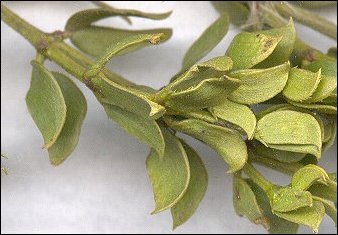

You've heard people talking about the importance of conserving water, but did you know that other inhabitants of the Chihuahuan Desert do this too? Plants can't import water—they must take care of what they have.
Since most plants lose a lot of water through their leaves, desert plants have specialized leaves to avoid this. Waxy leaves help prevent water from evaporating in the hot sun and dry air. Small leaves give little surface area for water loss. Some plants sprout leaves only after the rains come, and drought causes plants like paloverdes to lose leaves, while the green chlorophyll of the trunks and limbs help them continue to make food! Then we have our lazy little flowers. Many sprout, grow, and bloom only after rains, and their seeds doze until the next wet season, free from the need of water.
Next time you see someone wasting water, remind him that even our
plants are working to conserve our precious resource!

Listen to the Audio (mp3 format) as recorded by KTEP, Public Radio for the Southwest.
Contributor: Scott M. Cutler, Centennial Museum, University of Texas at El Paso.
Desert Diary is a joint production of the Centennial Museum and KTEP National Public Radio at the University of Texas at El Paso.

Leaves of Creosotebush (Larrea tridentata). Note the small size and thickness; not visible here is a thick coat of waterproofing. The paired leaflets also conserve water during times of drought by folding together, as can be seen here, and thus exposing less surface to the dry air.
Phillips, S. J., and P. W. Comus, editors. 2000. A Natural History of the Sonoran Desert. Arizona-Sonora Desert Museum Press, Tucson, 628 pp.